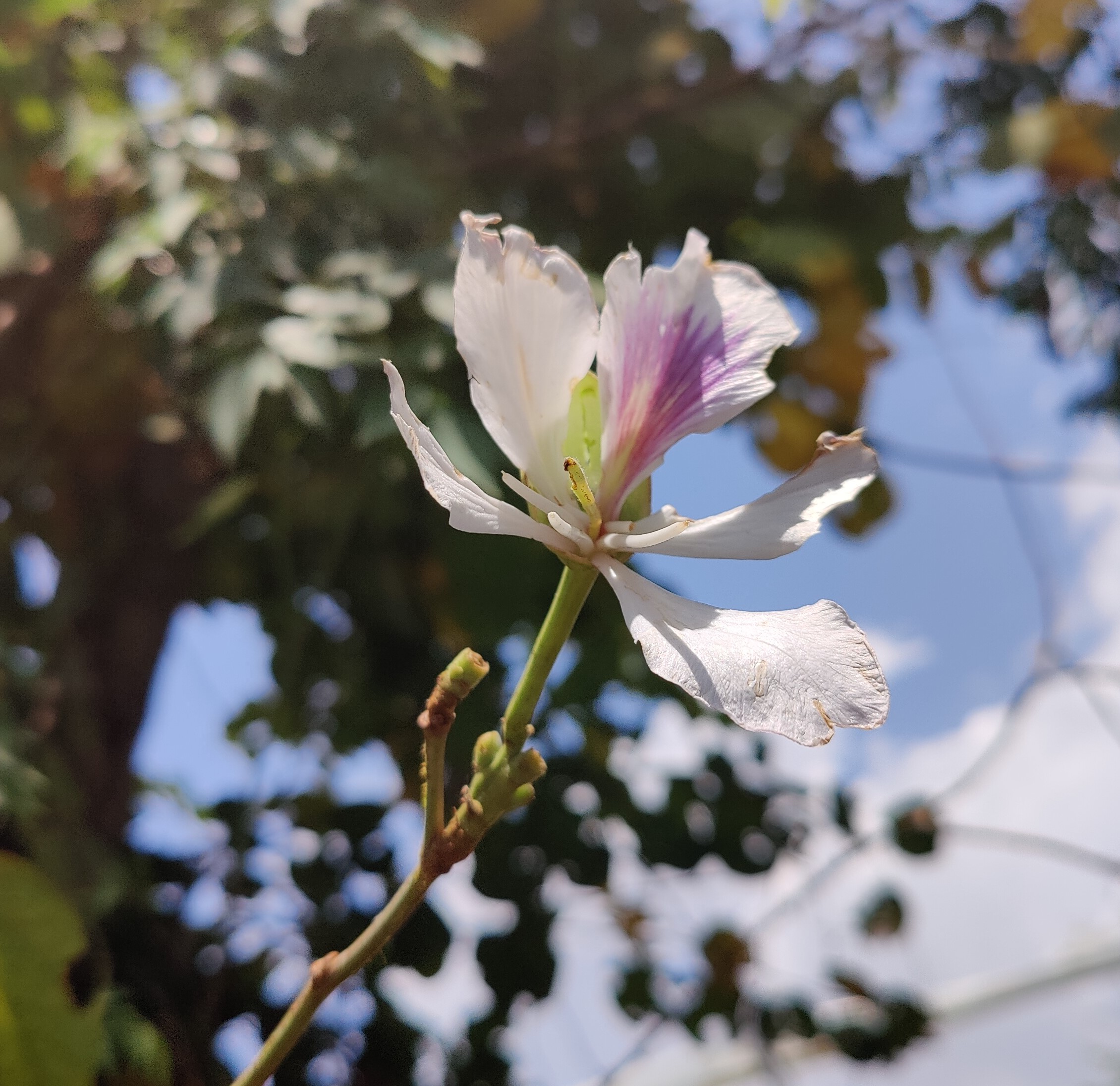

Bauhinia variegata L.
|
It is commonly known as Kachnar and belongs to the family Fabaceae. Flowers of this plant are edible as vegetable. It is a good source of polyphenols and vitamins such as Kaempferol-3-O-rutinoside, p-Coumaric acid, Caffeic acid and Vitamin E (α-tocopherol). Kachnar extracts shows anti-inflammatory, anti-tumor and immunomodulatory properties by decreasing the production of Nitric oxide (NO), inducing apoptosis by increasing the levels of GSH and increasing proliferation of Th1 cytokines, CD4+ and CD8+ T cells. Mode of Consumption : Leaves & flower buds fried, cooked, seeds roasted |
| Plant Details | Agro-climatic Zone | Vernacular Names | Pictures |
| Scientific Name: Bauhinia variegata L. Family: Fabaceae Lindl. Class: Magnoliopsida Order: Fabales Genus: Bauhinia Plum. ex L. Fruiting Season: February to April Parts: Flower |
|
Himachal Pradesh : Kachnar |
 Flower |
| Compound/Extract | Activity | Mode of Action | Marker/References |
| Hydro-methanolic extract of stem, bark, flower, and buds | Anti-tumor | Hydro-methanolic extract of stem, bark, flower, and buds increases levels of GSH in the liver, kidney, and blood and initiates apoptosis in the tumor cells. | GSH and caspase enzymes[4] |
| Hydro-methanolic extract of stem, bark, flower, and buds | Immunomodulatory | Hydro-methanolic extract of stem, bark, flower, and buds tends to increase CD4+ and CD8+ T cells, reduce the concentration of IL-4, and IL10, and enhance the proliferation of Th1 cytokines and T cells. | IL-4, IL10, CD4+ and CD8+ T cells[1] |
| Flower extract | Anti-inflammatory | Flower extract inhibits the Nitric Oxide (NO) production in the cells. | NO[3] |
| Major Class | Metabolites (Content of bioactives: mg/100g Fresh Weight) |
| Flavanoid | Kaempferol-3-O-rutinoside: 22.64 mg/100g[3] |
| Phenolic acid | Caffeic acid: 19.6 mg/100g, p-coumaric acid: 16 mg/100g[3] |
| Vitamin | α-Tocopherol: 0.38 mg/100g[3] |
| Effect | Observation | DOI |
| Disease | Formulation | Reference | Author | TKDL |
| Scrofula / Cervical lymphadenitis | Kanchanar Kwatha | Sharangadhara Samhita | Sharangadhara charya, Translated by Smt. Shailaja Srivastava, Published by Chaukhamba Orientalia, Varanasi, Edn. 2nd, 1998. | Ayurveda |
| Information from Wealth of India | Reference |
|
CSIR(1948).The Wealth of India, Raw materials,Vol.-I ,P.161, New Delhi, India |
| CSIR-North East Institute of Science and Technology, Jorhat-6, Assam, India
CSIR-Institute of Himalayan Bioresource Technology, Palampur-61,Himachal Pradesh, India |